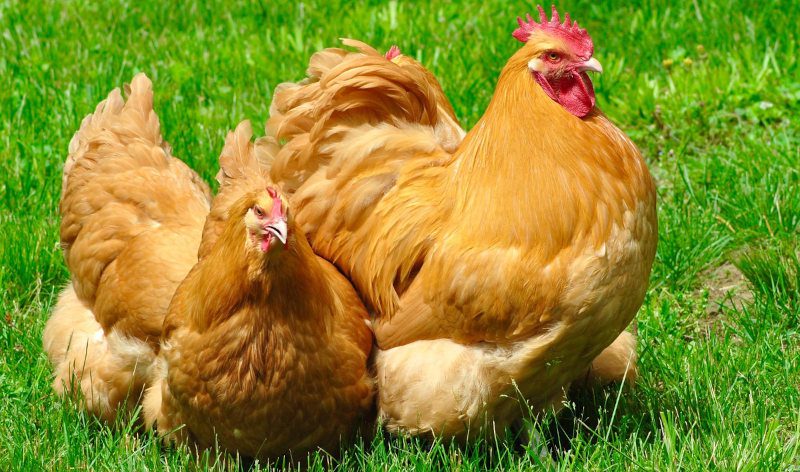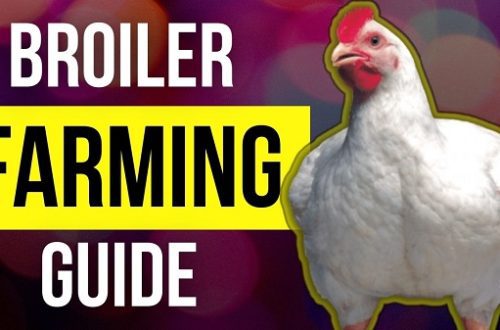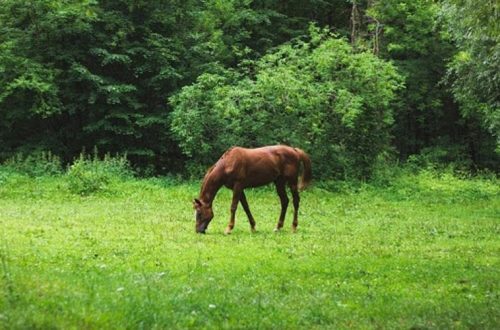
Orpington chicken breed: year of origin, color variety and care features
Poultry farmers currently breed three main breeds of chickens: egg, meat, meat and egg. All three breeds are equally popular. However, the greatest popularity and demand belongs to poultry meat breeds, especially the Orpington chicken breed. This is due to the fact that in a short time Orpington chickens gain a lot of body weight.
Contents
Orpington chickens
Orpington is a type of chicken that got its name because of the city of the same name located in England. William Cook created the Orpington breed, he dreamed of a breed of chickens that would meet all the requirements of that time, and white skin was then one of the main requirements.
In XNUMX, work began on the development of orpington chickens. At first, chickens had two forms of combs: rose-shaped and leaf-shaped, after some time it was decided to leave the leaf-shaped form. When forming the breed, dark Plymouth Rocks, Langshans and Minorocks were used.
Almost all breeders really liked the Orpington breed, and breeders, in turn, immediately became improve the breed. As a result, Orpington chickens have lush, beautiful plumage, which is their hallmark. Experiments with the breed continued by English breeders until the bird acquired the look that is today the reference.
Description of the Orpington breed
Birds of this breed have a wide chest and a body of the same volume. The head of chickens is small in size, and the color of the crest is scarlet. The earlobes are red and the earrings are round.
The body of adult Orpington chickens is shaped like a cube, which gives them a massive appearance. The body is wide and deep, the shoulders are quite wide, the tail is short, and the height of the hens is low. Lush plumage further enhances the impression.
Bird leg color blue and dark – in birds whose color is black. In other cases, the color of the legs is white-pink. The tail and wings are small in size, the plumage of the chicken is soft. Orpington hens, unlike roosters, have a more squat appearance. The color of the eyes depends on the color of the plumage.
Orpington birds are considered one of all existing poultry. the most beautiful. This breed competes well both in terms of meat productivity and egg productivity. These birds are very attractive and noble. Chickens of this breed decorate any poultry yards.
Orpington chicken color
Colors by which chickens are distinguished:
- yellow or fawn;
- black, white and black and white;
- blue;
- red;
- birch;
- striped;
- porcelain;
- partridge and yellow with black edging.
Orpington chickens black color were originally bred by William Cook. Besides the fact that they had excellent productive qualities, they also attracted attention due to their bright and unusual appearance. Other colors in this breed have come about because of the desire of many poultry farmers to improve the breed.
For the first time in XNUMX, people saw Orpingtons at exhibitions. white. They appeared due to the crossing of black Hamburg chickens and white leghorns. As a result, the resulting chickens were mated with white Dorkings.
Five years later, Orpingtons appeared at the exhibition fawn. Such chickens were obtained as a result of crossing breeds of three types: fawn Cochin, dark Dorking and golden Hamburg. From the moment they appeared to the present day, birds of this color the most common.
Three years later, for the Diamond Jubilee of Queen Victoria, Orpingtons were introduced. porcelain color. In XNUMX, black and white Orpingtons, and in XNUMX, Orpington blue birds were bred. Chickens of this color are few and are amateur.
How eggs are selected. Feeding and rearing young animals
To obtain a good brood of chickens, certain requirements must be met. Chief among them is egg selection. To do this, use an ovoscope, determining whether the eggs have the correct shape and whether there are cracks on the shell. Eggs that do not have defects are classified as breeding and are chosen for breeding chickens.
After all procedures, the egg should be stored for a week in a dry and cool room. Chicks will hatch viable and strong if the all necessary conditions.
From the third to the fifth day after hatching, the chicks are given glucose and antibiotic “Enroflokacin” for the prevention of various diseases. From the sixth to the eighth day, the diet of chickens is replenished with vitamins. Three weeks later, you need to repeat the use of antibiotics.
The main goal of the poultry farmer is to provide chickens balanced diet. From the first to the third day, chickens must eat one boiled egg, previously crushed. One chick accounts for one-thirtieth of a whole egg. In addition to eggs, corn and millet grits are excellent. On the fourth day, greens are added in a very small amount, for example, onions or nettles.
Chickens in the first two weeks are recommended to drink only boiled water, a little later you can give raw. When the chicks are two months old, they begin to eat mixtures of various cereals, just like adult birds.
How to feed chickens
In order for chickens to grow up healthy and strong, special attention must be paid to the intervals between meals. A chick that is less than ten days old needs to be fed every two hours, after that, until forty-five days, the chickens are fed every three hours. Older chickens, like adults, need to be fed every four hours.
It happens that even with a balanced diet, individual chickens lag behind in development. This does not mean that they have little chance of surviving, just that they need more attention and food.
What are the features of Orpington chickens
These birds do not need a large aviary because they run very little and do not fly at all.
Breeding highlights:
- Young chickens are very picky about food. Especially chickens.
- Chickens of this breed always eat a lot, which leads many to obesity. It is necessary to control portions of food intake.
- Chickens have a tendency to anemia, so you need to constantly ventilate the room.
- To improve breeding, it is recommended to cut the feathers in the form of a funnel around the anus.
- The birds of this breed are late maturing because the chicks grow slowly. This breed is not affected by the pattern that the meat species should grow rapidly. You need to be patient and wait for the puberty of the chickens.





